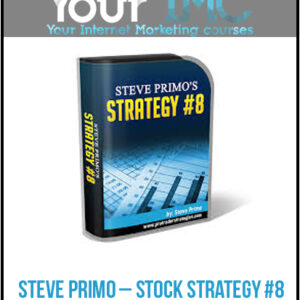 Scott P. Stevens – Mathematical Decision Making: Predictive Models and Optimization
Scott P. Stevens – Mathematical Decision Making: Predictive Models and Optimization
Not so long ago, executives faced with complex problems made decisions based on experience, intuition, and no small measure of luck. But now there’s a better way. In recent decades, mathematics and computer science have perfected formerly top-secret techniques for predicting the best possible outcomes when faced with conflicting options. This field goes by different names—analytics, operations research, linear and nonlinear programming, management science—but its purpose is simple: to apply quantitative methods to help business managers, public servants, investors, scientific researchers, and problem solvers of all kinds make better decisions.
Consider the following applications of this powerful set of tools:
- Pricing: Costco rose to become one of the top-ranked retailers in the world by combining membership fees with the economy of selling in bulk. A mathematical technique—called genetic algorithms—shows the advantages of this strategy as well as the optimum prices to charge.
- Scheduling: Using nonlinear programming, many airlines employ scheduling software that can find the most favorable solution to unexpected disruptions—from weather to mechanical problems to crew availability—saving millions of dollars in operating costs.
- Bidding: Simulation models can take a lot of guesswork out of competitive bidding for a project. By running repeated simulations against competitors, a bidder can come up with a proposal that has a good chance of winning the job, while still making a profit.
- Queuing: Any process that reflects the behavior of waiting lines is known as queuing. Markov analysis shows how a small increase in input to a system can have a major impact on waiting times. The method also reveals surprising solutions for making long waits vanish.
These same techniques can be applied to retirement planning, stock portfolio analysis, budget forecasting, health care allocation, public relations, marketing and advertising, and many other tasks for enterprises large and small. The applications are truly endless!
Mathematical decision making got its first rigorous tests during World War II, when the Allies used top-secret operations research to protect convoys, improve the aim of anti-aircraft fire, and locate the weak points on Allied bombers. After the war, private industry adopted operations research with enthusiasm, but these new methods were expensive, computing speed was slow, and only specialized experts could take advantage of the algorithms. That situation has changed dramatically, and today anyone with a home computer and a spreadsheet program can harness the power of these methods to solve practical problems. The trick is knowing what you can do and how to do it.
Mathematical Decision Making: Predictive Models and Optimization is your guide, teaching you the major mathematical techniques, applications, and spreadsheet procedures for basic analytics in 24 information-packed half-hour lectures. Your professor is award-winning educator Scott Stevens, Professor of Computer Information Systems and Business Analytics at James Madison University.
Those who will benefit from Professor Stevens’s engaging presentation include:
- managers eager to make better decisions—whether in business, technical, or non-profit endeavors;
- professionals aspiring to advance in their careers by mastering a proven approach to problem solving;
- those who work with or review spreadsheet and graphical presentations, and need to be able to separate good data from bad;
- students in business, mathematics, finance, marketing, health care, engineering, urban planning, and a host of other fields;
- math lovers curious to see a field that is often the opposite of calculus: simple functions and complex boundary conditions, instead of complex functions with simple boundary conditions; and
- lifelong learners who want to hone their critical thinking skills with important analytical techniques, made accessible and intellectually exciting as never before.
Discover the Art of Deciding
You’ll find that the challenge of analytics is not the math, which is often surprisingly easy, but the wide choice of procedures you have at your fingertips. The art is picking the most effective one to apply to your problem, and this is what Professor Stevens walks you through in fascinating detail. All that’s needed is a willingness to use simple equations. Moreover, you’ll see how modern spreadsheets take the drudgery out of finding solutions, and they make setting up and visualizing problems simple and straightforward.
Mathematical Decision Making is vividly illustrated with graphs, charts, diagrams, and computer animations, which greatly aid understanding the material. In addition, Professor Stevens demonstrates the importance of cultivating your visual intuition. This is particularly helpful when you move from linear programming to nonlinear programming, where effects of synergy and interaction can have strong impact on the bottom line. He shows how you can visualize this new world as a landscape, and then use your natural intuition to decide how best to approach the problem. As an illustration, you see how the fight between Blu-Ray and HD DVD for dominance in the high-definition video market can be pictured as a hyperbolic paraboloid—a saddle-shaped figure—with all of the possible outcomes of the competition mapped onto its surface.
Conveniently, the course guidebook includes additional thought-provoking questions, problems, and answers for each lecture, along with recommended resources to help you dig deeper into any topic where you want to know more.
Analyze a Wealth of Cases
The beauty of this course is that it features case after case of real-life examples. Among the many you’ll explore are these:
- Public relations: The makers of Gerber baby food had experienced a public relations problem earlier in their history. See how they used decision tree analysis during a second budding crisis a dozen years later to map their options and reach a successful decision.
- Keeping clients happy: NBC schedulers once had to match advertisers to television time slots by hand, juggling a bewildering number of competing demands. You’ll learn how computer algorithms and the concept of “hard” and “soft” constraints revolutionized their job.
- Finding a missing plane: No one knew why Air France flight 447 crashed into the ocean in 2009—until Bayesian analysis led searchers to the wreck site and the black box. Bayes’s theorem tells how to compute new probabilities as new information becomes available.
- Evaluating efficiency: Non-profit organizations and government programs are notoriously hard to evaluate for efficiency. Using hospitals as a test case, you’ll discover how data envelopment analysis shows which facilities are performing effectively, as well as how to improve the ones that aren’t.
An acclaimed instructor who practices what he teaches, Professor Stevens has pushed the boundaries of mathematical decision making on many fronts. His research has addressed such problems as neural network prediction of survival in trauma patients and how to optimize the market for natural gas from the Gulf of Mexico.
Above all, he loves mathematics and the wonders it can perform. “Math is an absolutely beautiful thing,” he marvels. “I’m at my happiest when I can get someone else to see just a piece of that. It’s lovely, structured, consistent, reliable, surprising, enticing, exotic. It’s a great world!” With Mathematical Decision Making, see for yourself how mathematics can make the everyday world we all inhabit a more comprehensible and much better place.
Sale Page: https://www.thegreatcourses.com/courses/mathematical-optimization-techniques.html
Archive: https://archive.ph/wip/mV0xD
Delivery Method
– After your purchase, you’ll see a View your orders link which goes to the Downloads page. Here, you can download all the files associated with your order.
– Downloads are available once your payment is confirmed, we’ll also send you a download notification email separate from any transaction notification emails you receive from coursesblock.com.
– Since it is a digital copy, our suggestion is to download and save it to your hard drive. In case the link is broken for any reason, please contact us and we will resend the new download link.
– If you cannot find the download link, please don’t worry about that. We will update and notify you as soon as possible at 8:00 AM – 8:00 PM (UTC 8).
Thank You For Shopping With Us!








